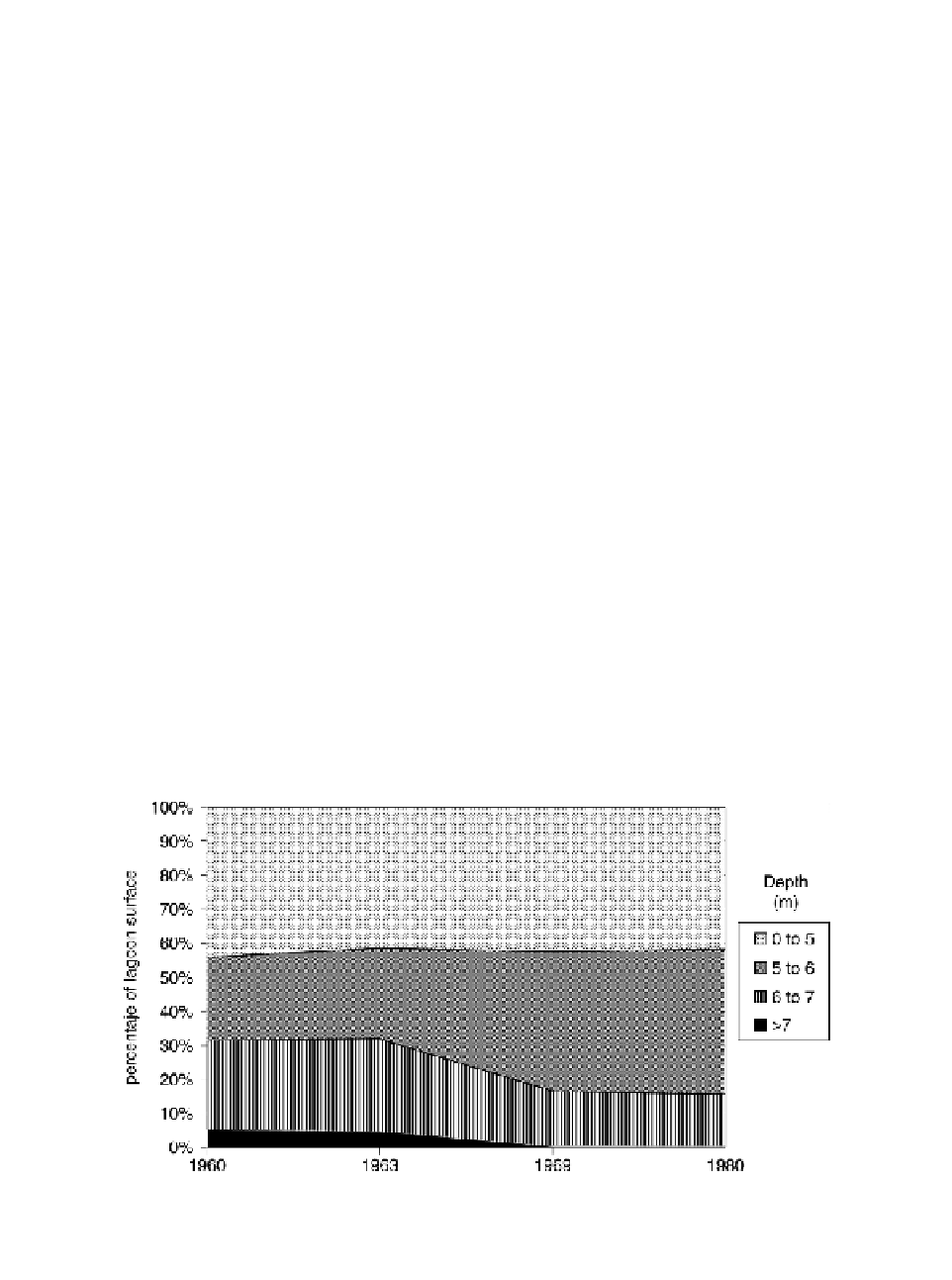Geoscience Reference
In-Depth Information
The most recent event was the opening of the El Estacio Channel in 1972. Biological
assemblages of the Mar Menor have been changing as a result of the degree of
isolation and environmental conditions. Salinity increased after the last sea level
regression in the Quaternary and the progressive isolation of the 18th century, reaching
a maximum of 70 at the end of that century. After that period several sporadic storms
broke the sandy bar, resulting in changes in salinity that allowed the colonization of
several species, mainly fishes (striped sea bream, gilt-head, sea bream).
35,36
The last
of these, which occurred in 1869 and was probably reinforced by the opening in 1898
of the Marchamalo
gola
, an artificial channel of communication with the Mediterra-
nean to be used for fisheries, caused a significant decrease in salinity from 60 -70 to
50-52. This decrease resulted in a marked change in the lagoon biology with the
introduction of several species of submerged rooted vegetation—
Cymodocea
and
Zostera
throughout the basin and occasionally
Posidonia oceanica
in sandy areas of
the south—and more than 30 new species of molluscs and fishes that became estab-
lished in the lagoon.
29
A similar process took place after the opening of the El Estacio
Channel. The above-mentioned increase in the renewal rate allowed the colonization
of new marine species with a twofold increase in the number of molusc and fish
species in the last 15 years.
9,13
As a consequence of the same process the allochthonous
jellyfish species
Cotylorhiza tuberculata
and
Rhizostoma pulmo
entered the lagoon
from the Mediterranean in the mid-1980s.
9
After an initial period of slow growth,
their populations grew to massive proliferations. They also became pests as a conse-
quence of the changes in the trophic status of the lagoon, resulting in a negative
impact on tourism (see below for details).
In this way, an increase in the water renewal or interchange rates with the open
sea is thus translated into an increase in the number of species inhabiting or visiting
the lagoon (
Figure 9.3.11
).
Related to this, changes in water renewal rates have also
FIGURE 9.3.10
Evolution of the depth distribution in the Mar Menor Lagoon. The maximum
depth of 7 m disappeared after 1969 and areas with a depth greater than 6 m now constitute
less than 20% of the bottom surface.


















Search WWH ::

Custom Search